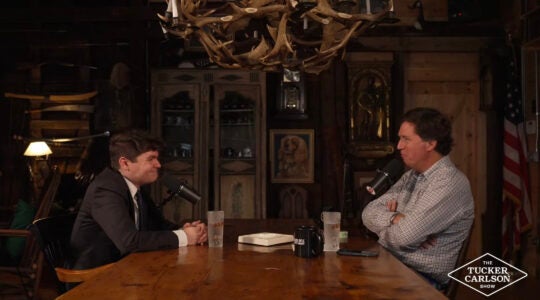Pogroms. Fiddlers. Poverty. Coziness. Tradition!
Are those the words that come to mind when you hear “shtetl?” Rutgers-based historian Jeffrey Shandler’s recently-published volume will shed some light on why these images spring to mind, and not, say, any old town—which is, after all, the actual meaning of “shtetl“).
Shandler has delved into Yiddish culture more broadly before, but Shtetl is a delightfully focused history of, well, the shtetl, dating back to Jewish Enlightenment-era polemics against it. Turns out, the tug-of-war between romanticizing the shtetl and deriding it has been going on since the shtetl’s very beginnings.
Shtetl-tourism, shtetl-as-modern-art, shtetl-as-living history—you’ll read about the familiar and the very odd indeed. But Shandler doesn’t judge—his aim isn’t to debunk the mythology of the shtetl, but rather to explain and illuminate it. Good for those of us who like to procrastinate by looking for shtetl mash-ups.
___
Watch some familiar shtetl images:
JTA has documented Jewish history in real-time for over a century. Keep our journalism strong by joining us in supporting independent, award-winning reporting.





